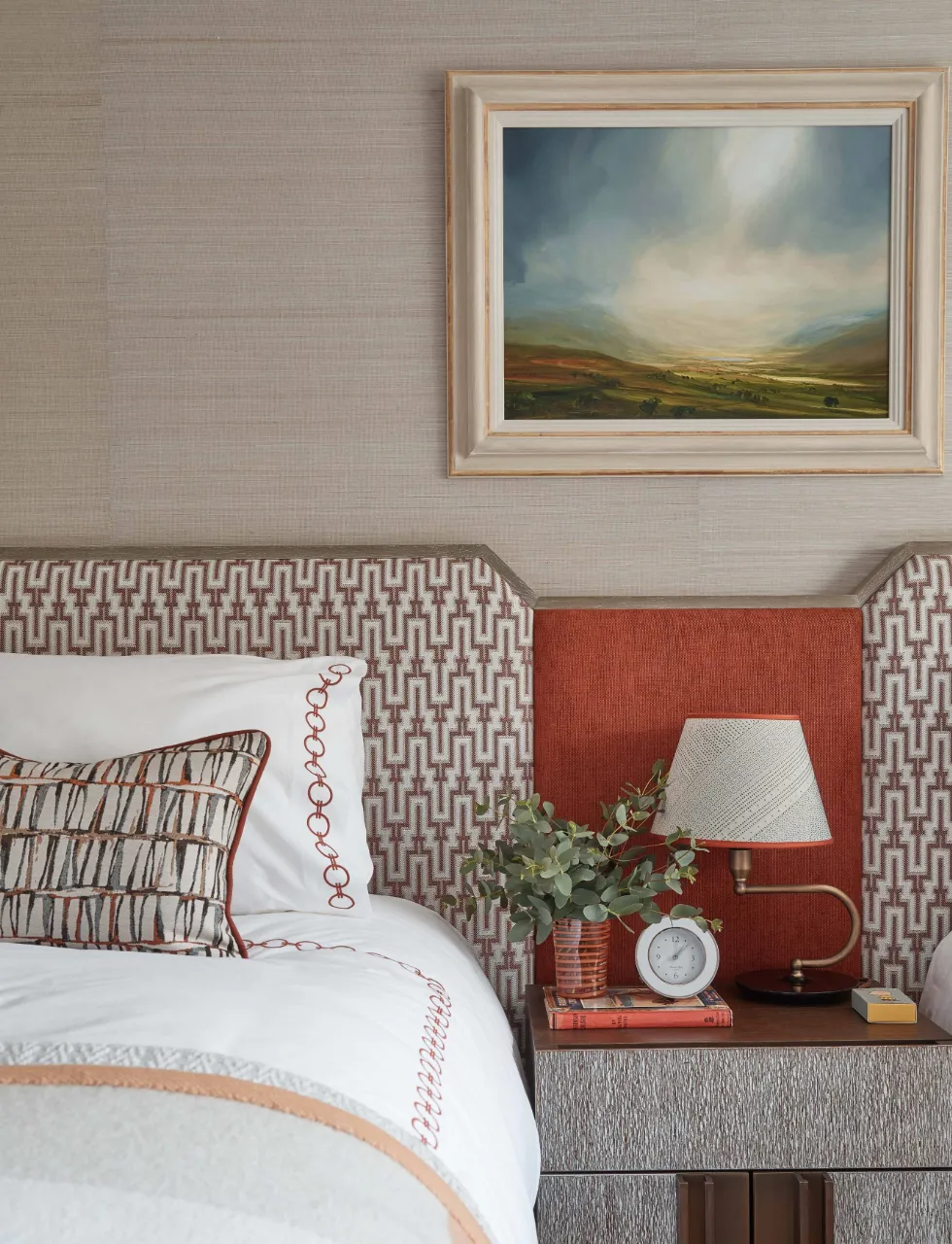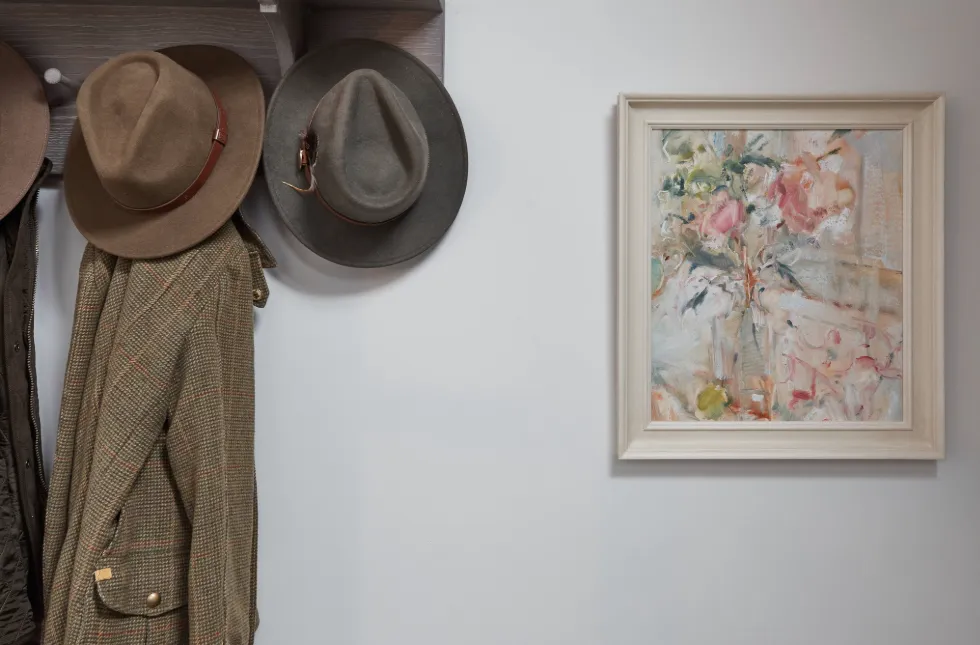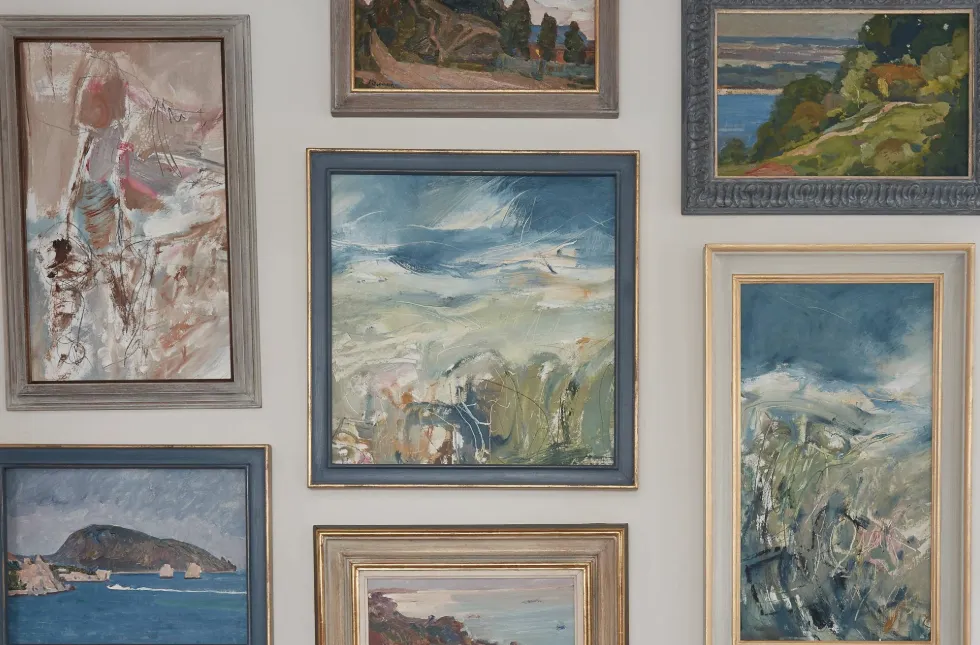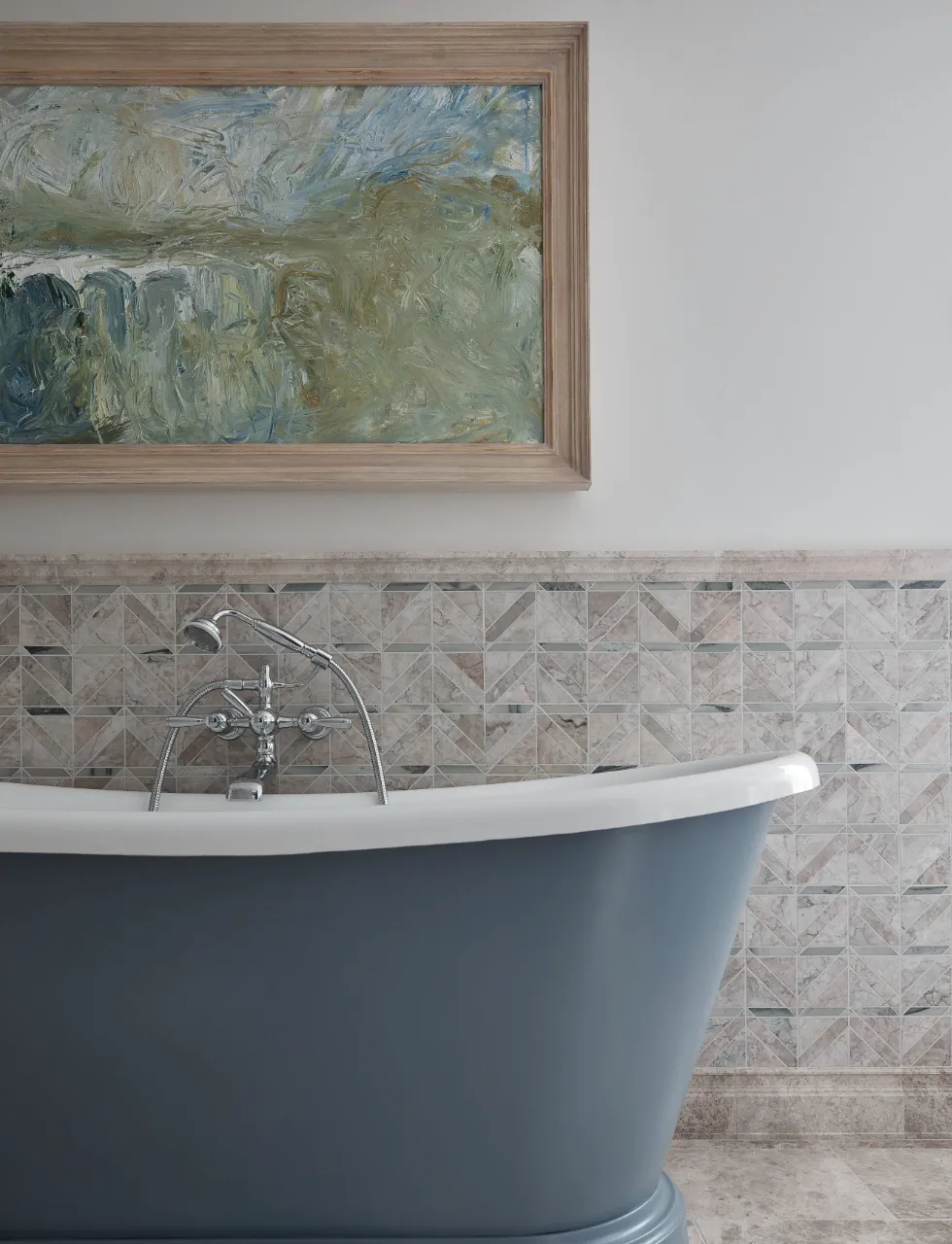In many ways the act of sourcing art is an art in itself. It offers a bridge toward understanding one another’s lived experiences and speaks to the quiet narratives we weave through life. When curated with intention, art becomes a reflection of identity and personal taste. In my opinion this makes the process of selecting pieces for the home profoundly transformative. It is far more than decoration; it anchors a space with memory and meaning. For this edition I had the pleasure of speaking with Deborah Allan, chief art curator at Wychwood Art. We discussed the deeply considered journey of choosing artwork for the home and building a purposeful collection by curating with emotion and clarity.
Deborah’s perspective is rooted in a wealth of experience: after studying History of Art and Fine Art at university, she spent over a decade at Christie’s, where she served as Director of Impressionist and Modern Art. She was then headhunted by Bonhams, where she became European Director before founding Wychwood Art, a gallery that champions emerging and established British artists. Years ago, I enlisted her help to source art for our home in the Lake District – Little Nut Cottage. It was a joy to reconnect and reflect on the creative process and our shared values on how art remains an essential thread in the story of home.
What qualities do you look for when recommending artwork? How does this process differ from someone curating their personal collection to a business selecting for their client?
When assisting a private client I prioritise understanding their existing collection, the artists they admire, and discover personal details like their travel preferences and hobbies. It also helps to understand the intended space for the new piece. I enjoy diversifying collections by introducing varying mediums, sizes, styles, and colour palettes. My goal is to present a mix of safer choices alongside more adventurous options, allowing their art collection to evolve alongside them.
Rather than solely recommending paintings, I may suggest prints or wall sculptures, especially if their collection leans heavily towards paintings. Our process is split into two – part one involves hanging their already existing works alongside some of our selected pieces, and the second occurs a few months later where we revisit the clients selection and enhance it if they so feel. In contrast, for hospitality and corporate collections, we typically complete the selection. For interior designers and studios like yourselves, you often have a clear vision, so we tend to guide and connect in this instance, complementing an already existing understanding of client preferences.
What trends are currently resonating most with collectors of British contemporary art?
I typically shy away from following trends, as I believe that art should reflect the authenticity of the artist and their vision rather than being swayed by fleeting fashions. Trends may come and go, but truly impactful art must stand the test today from these temporary shifts. That said, I have recently noticed a prevalence of luminous colours in paintings; it seemed that at least one artist on every stand was showcasing vibrant hues.
Do you prefer to guide or respond when sourcing pieces for a specific project?
Providing the best possible guidance means being thoroughly informed. I seek to understand not only the existing art pieces and the clients’ preferences but the details of the space itself such as the fabrics, flooring, finishes, and lighting. Rather than solely recommending paintings I may suggest prints or wall sculptures especially if their collection leans heavily towards paintings. Framing is also a critical factor and can completely change the impact of a piece.
For beginners, what advice would you offer to someone building their art collection?
My foremost piece of advice is to trust your instincts and seek pieces that resonate with you. Art should evoke emotion and create a connection and it’s truly remarkable how a painting or sculpture can speak to us on such a personal level. It’s essential to choose works that you genuinely love: reflect on what draws you to a particular piece whether it’s the story it tells, the memories it evokes, or simply the joy it brings you. Additionally, think about how the artwork will fit into your life. Consider where you will display it and how it will complement your environment. Lastly, don’t hesitate to explore different styles, allow your collection to evolve with you.
Art, like ‘design’ is not only a visual language but a deeply personal anchor. It reflects who we are, where we have been and how we wish to exist. At Katharine Pooley I have encouraged the values within our team that design, art and creation should stir a feeling and spark connection. It is a pleasure to ratify this community through a collaborative environment and engaging with the local and global community.











